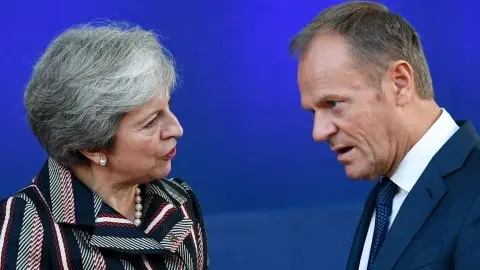Belgian elections: A large Green coalition?
Opinion polls suggest that the centre-right government is unlikely to win a majority at the federal elections. A large coalition comprising the Green parties looks likely
Caretaker government in place
After the fall of the Belgian government in late 2018, a caretaker government was set up, and this is expected to remain in place until the elections in May. The current situation is far from ideal and not conducive to taking necessary financial decisions. Bear in mind that before the government collapsed, it had lost its majority in parliament following the resignation of ministers affiliated with the New Flemish Alliance (NV-A). And a caretaker government has very little power. As a result, there has been no vote on the 2019 budget. A temporary budget based on 2018 expenditures has replaced this for now, keeping the public deficit at close to 1% of GDP.
That said, some plans which had already been discussed before the fall of the government have been voted upon by the parties making up the previous majority.
Prime Minister Charles Michel's aim was to find an alternative majority in parliament for other initiatives. But his efforts have largely failed- a situation we had anticipated, given that it can be difficult for parties to make concessions to opponents ahead of elections for fear of looking weak in the eyes of voters. We continue to believe that this situation will last until the elections on 26 May.
What kind of coalition to expect?
At this time, it's still hard to know what kind of majority could emerge after the elections. Nevertheless, a recent poll on voting intentions gives some important pointers:
- The previous coalition is unlikely to be renewed and will still lose seats compared to the polls conducted at the end of 2018.
- The progress of the Greens, which was already seen in the polls late last year, has been confirmed, and has perhaps even strengthened. Even if they are not essential for the formation of a majority, they are likely to be part of the next government. And that could mean some major changes to fiscal policy. It is also interesting to note that because of this progress in the polls and because of demonstrations in favour of stronger climate policy, climate change has been, up to now, the main (perhaps even the only) topic of the election campaign.
- A completely left or completely right coalition won't be able to reach a majority. Adding parties traditionally at the center of the political spectrum still won't necessarily be enough to form a majority.
- This means that a fairly large coalition of parties will be needed to reach a majority in parliament, which will likely slow down the process of forming a government. During this period, the caretaker government will remain in place, with no real power.
Fractured political landscape
The make-up of the next federal government remains very open. Given the fractured political landscape, it seems that the coalition will look like a patchwork of many parties. That could make it a bit more difficult to continue with structural reforms initiated by the previous centre-right government. On the other hand, a stronger emphasis on climate measures looks likely, especially as the probability of the Greens participating in the government has increased.
This publication has been prepared by ING solely for information purposes irrespective of a particular user's means, financial situation or investment objectives. The information does not constitute investment recommendation, and nor is it investment, legal or tax advice or an offer or solicitation to purchase or sell any financial instrument. Read more
Download
Download article
18 March 2019
In case you missed it: Central banks take a U-turn This bundle contains 9 Articles